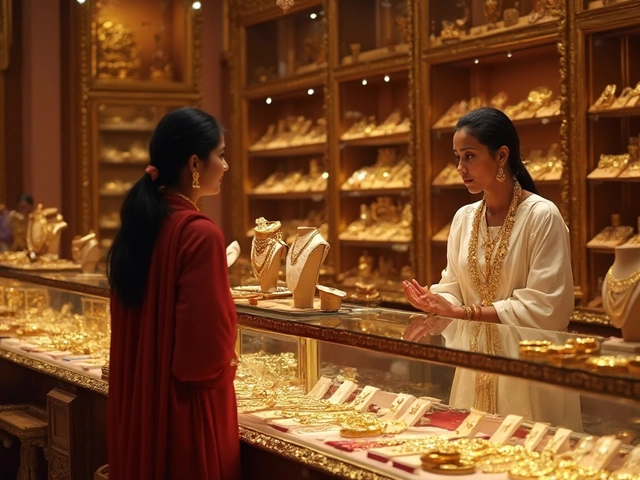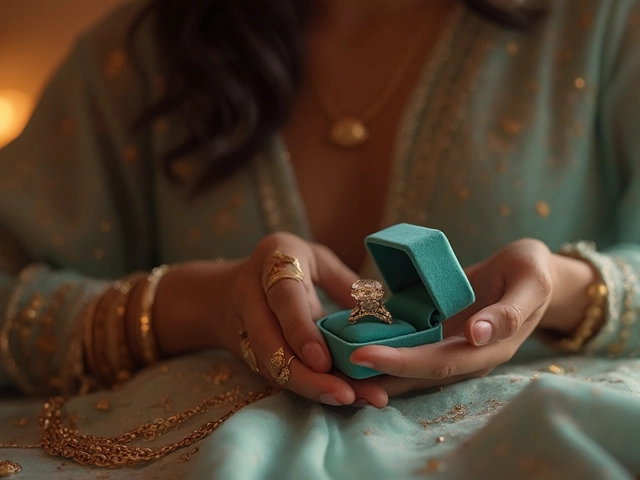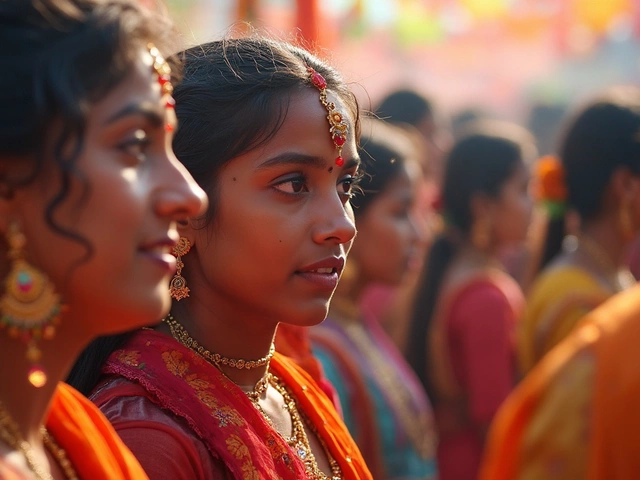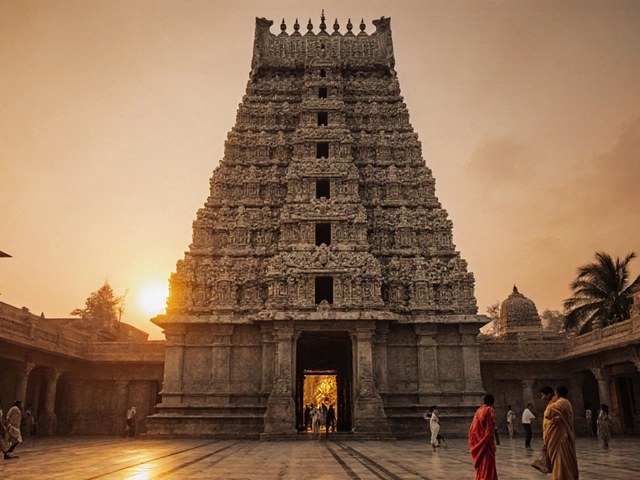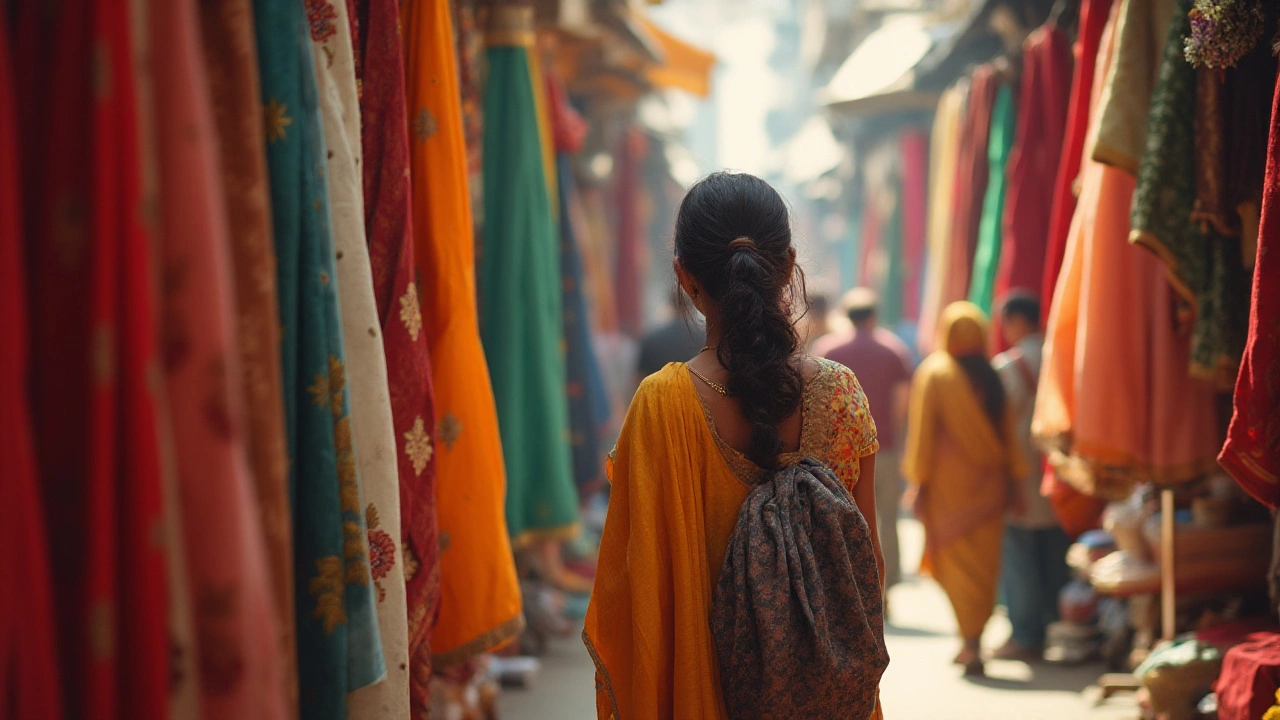
When traveling to India, dressing appropriately isn't just about fashion—it's a respectful nod to a vibrant culture rich in traditions and diversity. Weathered travelers will tell you that India’s incredible variety in climate and region offers a colorful palette of experiences, each demanding its own dressing style.
Understanding how to dress can make all the difference in comfort and cultural integration. Whether you're exploring the bustling streets of Mumbai or the serene landscapes of Kerala, knowing how to adapt your wardrobe might just enhance your journey in unexpected ways. Let's delve into some practical and culturally sensitive fashion advice for Americans preparing to embark on their Indian adventure.
Understanding Indian Culture
India, with its dazzling tapestry of history, religions, languages, and traditions, presents a cultural landscape that is both rich and varied. For an American arriving in India, it is essential to appreciate the centuries-old customs and social nuances that heavily influence daily life. An understanding of Indian culture not only helps travelers navigate social interactions but can also significantly impact how one dresses. Indian fashion is deeply intertwined with culture; clothes often symbolize various elements such as region, religion, and social status.
The colorful mosaic of Indian society is deeply rooted in values of modesty. With a diverse set of beliefs predominating across different regions, modest dressing is often considered a sign of respect. This doesn't mean donning ultra-conservative attire everywhere. Instead, think of blending in a way that respects these traditions while allowing personal style. From the vibrant saris worn in the South to the elegant salwar kameez popular in the North, attire often reflects regional pride and heritage. For men, kurtas and dhotis serve as traditional alternatives that comfortably fit local expectations of modesty and decorum.
The concept of modesty extends to various elements including, but not limited to, both the kind of attire and its color. Indian culture loves celebration, and this fondness is reflected in their fashion choices, with an array of bright, vibrant colors. In particular, certain hues hold cultural significance; red often signifies prosperity and is popular at weddings, while white is mostly worn at funerals and somber occasions. Understanding when and where such colors are appropriate can demonstrate cultural sensitivity.
The famous anthropologist Clyde Kluckhohn once said, "Culture is a way of thinking, a set of values, a way of acting, and a whole community's familiarity." Dressing with this awareness ties into his insights about cultural understanding.
A noteworthy point about Indian culture is the ritualistic aspect of dressing. Different festivals and ceremonies have specific clothing associated with them, often incorporating religious or spiritual elements into their design. During Diwali, the festival of lights, traditional attire with bright colors and intricate designs is favored to symbolize joy and prosperity. Conversely, during Holi, people wear plain white clothes that will inevitably become canvases once the color powder celebrations commence. Knowing about these traditions beforehand can enrich a traveler's experience and provide a unique opportunity to participate genuinely in cultural practices.
Language, too, plays a critical role in the cultural consciousness of India. With 22 officially recognized languages and hundreds of dialects, clothing can sometimes signal one's linguistic group, apart from regional identity. In many ways, the choice of everyday attire can impress locals by showing an understanding of these finer distinctions. Such awareness fosters a more profound connection with the people one encounters and respects their unique identity within the vast multitude that is India.
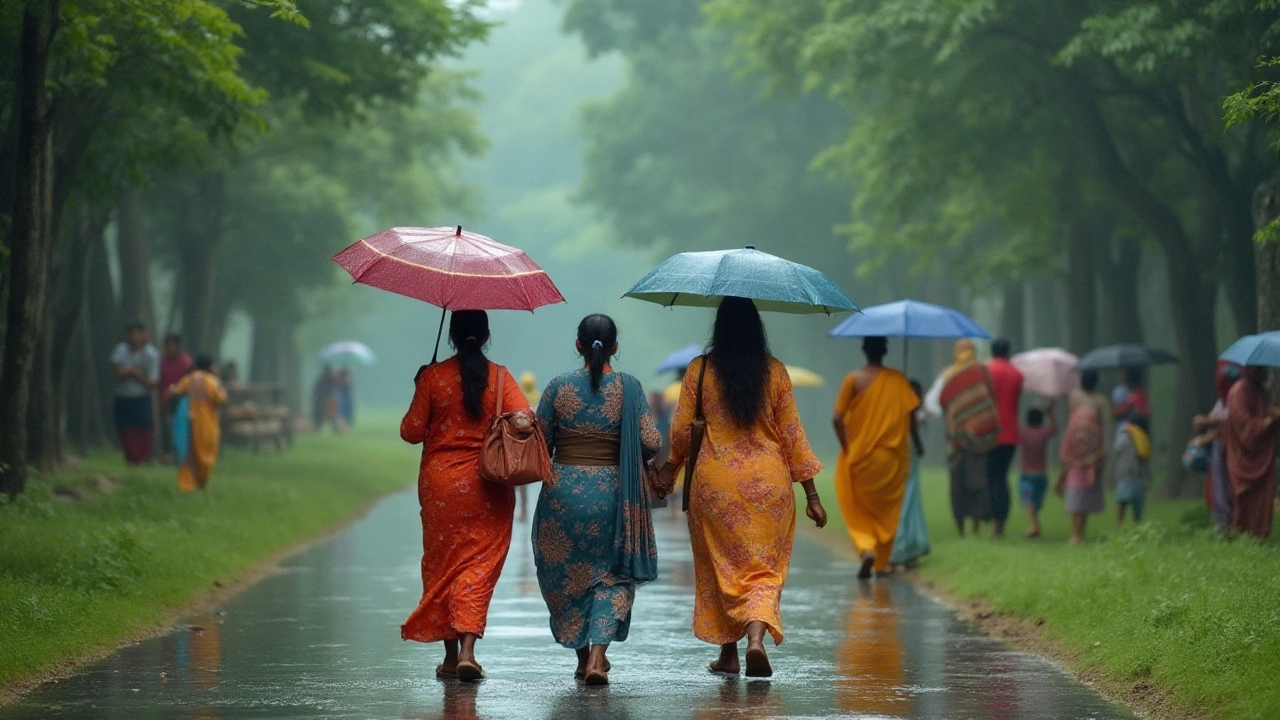
Climate Considerations
India's vast landscape stretches across climatic zones ranging from the searing deserts of Rajasthan to the chillier foothills of the Himalayas. It’s no surprise, then, that understanding the climate is essential for any American traveler aiming to dress appropriately. The subcontinent experiences four major seasons, each with unique demands on your wardrobe. During summer, which can start as early as March, temperatures often soar above 100°F in many regions. Consider breathable fabrics like cotton and linen that help to beat the heat and cope with humidity, especially if your itinerary includes cities like Delhi or Chennai. Pack light-colored attire to reflect the sun and help keep you cool.
The monsoon season, primarily occurring from June to September, paints India in lush greens but brings its own challenges. The rain is heavy and frequent, making waterproof gear like jackets and shoes indispensable. Opt for quick-drying clothing materials to stay comfortable as you explore the countryside or engage with urban markets bustling under incessant downpours. Travelers find it handy to carry a compact umbrella everywhere they go, as showers can be unpredictable and intense.
As the calendar flips to autumn, spanning October and November, the weather becomes more forgiving, especially in the northern parts. This is an ideal time to visit the tourist hotspots, with temperatures ranging from mild to pleasantly warm during the day, cooling to a brisk chill at night. Layering is the key here. A lightweight jacket or shawl can make all the difference in comfort without compromising your fashion sense. Fashion in India also embraces natural colors and vibrant hues which beautifully align with the budding festivals during this time.
Winter months, particularly from December to February, greet northern travelers with frosty mornings and cool evenings. For places like Agra and Jaipur, warmer woolens and sweaters are not just practical but essential. In contrast, southern India remains warm, with the sun frequently peeking through azure skies. A significant weather tip: always check regional forecasts and plan your wardrobe accordingly, for a seamless and enjoyable visit.
According to a travel guide by Lonely Planet, "Dressing for the weather not only ensures comfort but also a deeper appreciation for the local lifestyle." With this in mind, adapting to India’s diverse climate is both a practical necessity and an expressive way to participate in the rich cultural fabric. With the right wardrobe choices, you can traverse this incredible country while feeling at ease and in sync with the rhythms of its environment.
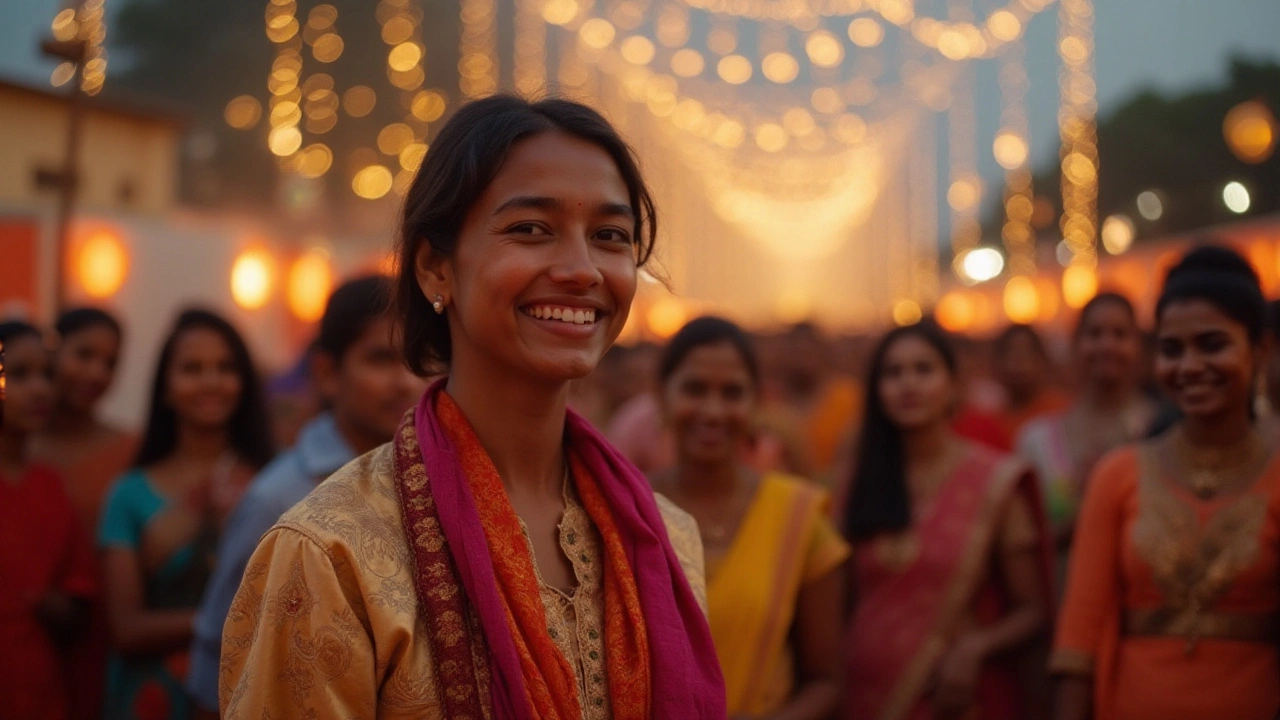
Modesty and Color
Dressing modestly in India is not merely a nod to tradition; it’s a cornerstone of blending in harmoniously with the local culture. Across the nation, modesty in clothing speaks volumes of respect and understanding of the cultural nuances that have been shaped over millennia. While the western world might embrace tighter clothing as the norm, in India, clothes that cover the shoulders and knees are generally more acceptable and often necessary for entering spiritual or traditional sites, which are an integral part of the culture. This modest approach is prevalent among both genders, with men often opting for long trousers over shorts in more traditional settings.
Colors play a significant role in the fashion tapestry of India. It's fascinating how each hue holds a symbolic meaning, with certain colors considered auspicious and others reserved for specific occasions. For instance, you'll notice how vibrant colors like red, yellow, and green are favorites for their lively representation of joy and prosperity. These colors are not merely for festivals; wearing them on regular days can bring a radiant cheer to your attire. However, consider the context—darker colors might be preferred for somber occasions like funerals.
The blending of modesty with color can be seen in traditional Indian garments like saris, salwar kameez, and kurta-pajamas. While saris are often rich in color and intricate patterns, a salwar kameez can be intricately designed or elegantly plain, adeptly combining modesty with attractiveness. This attire is not only culturally significant but also practical, allowing mobility and breathability in India's diverse climate. As an American traveler, you can embrace wearing such outfits to appreciate and participate in India's cultural narrative without standing out unnecessarily.
International designer Ritu Kumar once remarked,
“The blend of modernity with traditional aesthetics is what makes Indians' style unique and intriguing.”This perspective highlights the importance of respecting traditional aesthetics while also appreciating the flair that modern fusion brings to dressing. Blending vibrant, culturally aligned colors with suitable modesty allows American travelers to immerse themselves genuinely and comfortably in their Indian adventure. So, as you pack your wardrobe for India, keep in mind the vibrant spectrum of colors and the cultural significance they hold. Not only will you look the part, but you’ll also gain a deeper understanding of the culture that these colors represent.
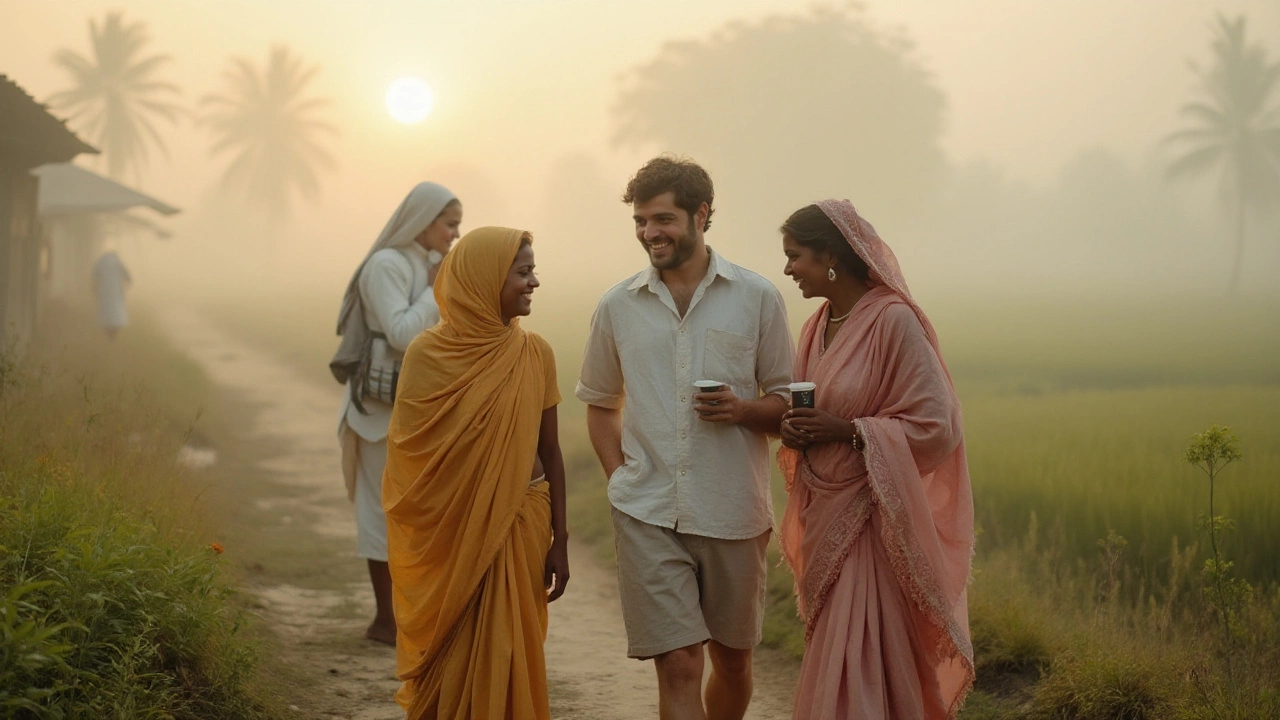
Essential Accessories
When preparing for a journey to India, packing the right accessories can greatly enhance your experience, both functionally and fashionably. India, known for its diverse cultures and climates, requires travelers to think strategically about their accessory choices. A lightweight scarf, for instance, is not only a fashion staple but also serves multiple purposes: it offers protection from the sun, provides modest coverage in more conservative settings, and even acts as a barrier against dust in crowded urban areas. Choosing accessories that blend utility with style helps ensure a seamless experience as you transition from one vibrant locale to another.
Footwear is another essential consideration, especially given the variety of terrains one might encounter in India. From exploring ancient temples to navigating bustling spice markets, comfortable walking shoes are a must. Many travelers prefer shoes that can be easily slipped on and off, particularly since shoes are commonly removed when entering homes and places of worship. It's helpful to know that some parts of the country might even require a more durable pair for hikes or expeditions into nature.
Coco Chanel once said, “Before you leave the house, look in the mirror and take at least one thing off.” While this is sage advice for minimalist accessorizing, in India, a thoughtful addition is often more in line with cultural norms—particularly when attending an event or festival.
Incorporating local jewelry can be a delightful way to enhance your attire and express a connection with Indian culture. Bangles and earrings crafted from locally-sourced materials not only add a splash of color but also offer the wonder of engaging with traditional craftsmanship. While indulging in such adornments, it's beneficial to learn about their cultural significance—each region boasts its own unique styles and practices. For example, the bidri work is renowned in the south for its beautiful silver inlay work on black metal, a technique passed down through generations.
Umbrellas, a seemingly mundane accessory, become indispensable in India's monsoon season, particularly between June and September. These aren't just functional for keeping dry; they allow you to explore outdoor attractions without interruption. Consider choosing a vibrant pattern or color, which could serve as a conversation starter with strangers, breaking the ice in settings bustling with local life. Strong winds can accompany monsoons, so investing in a wind-resistant model can save you from mid-downpour disasters.
Travelers to India have often remarked that preparing a small backpack with daily essentials is a lifesaver. This includes a reusable water bottle, which is crucial for staying hydrated in the heat. Sunscreen, insect repellent, and a portable phone charger are also highly recommended, as they cater to comfort and safety during long days of exploring. Remember that many areas don’t accept electronic transactions, so carrying a small amount of cash might be necessary, ideally divided strategically among your accessories to minimize loss and inconvenience.
Finally, while strategizing your accessory choices, a reversible or multi-functional piece of clothing can simplify packing and reduce luggage weight. Many travelers find that outerwear or convertible pants offer the versatility needed across different Indian climates and cultures. Adjusting to urban settings with ease or trekking rural paths is possible with the right toolkit of accessories. There’s beauty in being prepared, and choosing these essentials wisely will help you embrace India’s beautiful unpredictability with ease.

